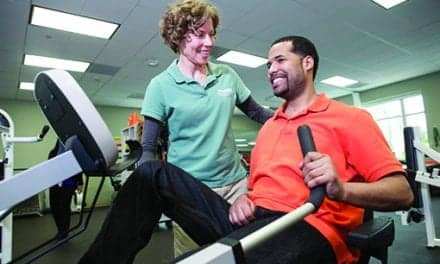Patients with rheumatoid arthritis (RA) had an increased risk of nonsurgical site infection but a lower risk for venous thromboembolism (VTE) following joint replacement surgery, a nationwide Danish study found.
Compared with patients with osteoarthritis (OA), those with RA had a hazard ratio of 1.29 (95% CI 1.03-1.61) for pneumonia, sepsis, and erysipelas within 90 days of having total hip or total knee replacement, according to René Cordtz, MD, of Rigshospitalet in Gentofte, Denmark, and colleagues, in a media release from Medpage Today.
To explore and quantify these risks, Cordtz’s group conducted a population-based cohort study, published in Seminars in Arthritis and Rheumatism, in which they analyzed data from the Danish Hip and Knee Arthroplasty Registers, the Danish National Patient Register, and the DANBIO rheumatology register.
They identified 2,899 patients with RA and 112,571 with OA who had joint replacements during the years 2000 to 2014. Those with RA were younger at the time of joint replacement (66.1 vs 69.1), more often were women (73% vs 58%), and were more likely to have knee, rather than hip, replacement (63% vs 44%). Almost all received thromboprophylaxis.
The RA patients also more often had a history of cardiovascular disease, infections requiring hospitalization, and chronic obstructive pulmonary disease, while patients with OA more often had a history of malignancy.
The increased risk of infection with RA was seen in both sexes and all age groups, and the lower risk of VTE was even more so among men with RA (HR 0.48, 95% CI 0.2-1.17). The risk remained lower after exclusion of patients with a history of VTE or cancer.
Overall, MI and stroke risks were not increased for patients with RA, although a nonsignificant increase was observed for women with RA (HR 1.53, 95% CI 0.91-2.56).
Among the RA patients, 411 had received a biologic within 3 months prior to surgery. Those patients had an almost five-fold increased risk of VTE (1.9% vs 0.5%, HR 4.82, 95% CI 1.67-13.90) compared with RA patients not receiving a biologic — a result the authors termed “surprising.”
These patients also more often experienced a MI/stroke (1% vs 0.6%) and had a nonsignificant increased risk of infection (HR 1.35, 95% CI 0.65-2.80), the release explains.
In discussing their findings, the researchers wrote, “The lower risk of VTE following total knee arthroplasty is intriguing given that RA is a well established risk factor for VTE in a nonsurgical setting.” Potential explanations for this could be that obesity was more prevalent among comparator patients with OA, and that OA patients typically use more nonsteroidal anti-inflammatory drugs.
They conclude in the release that patients with RA were at greater risk than those with OA for infections after knee or hip replacement, and that they had a lower risk for VTE following total knee replacement.
In addition, “the increased risk of postoperative VTE among patients receiving biologics needs to be investigated further.”
A study limitation was a lack of information about start and stop dates for biologics in the DANBIO register.
[Source: MedPage Today]





